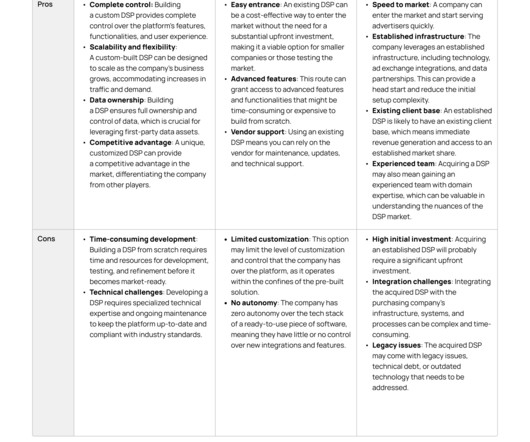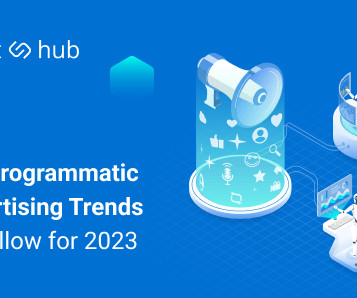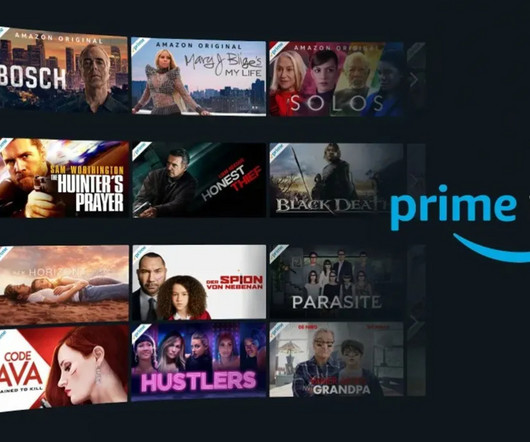Why Do Companies Want to Build Their Own RTB Bidder or DSP
Clearcode
SEPTEMBER 20, 2023
billion by 2029. Advantages of DSPs include automated ad buying, scalability, cost-effectiveness, and precise audience targeting. An example of integration between a DSP and a DMP is to gain audience extension. Some DSPs also leverage artificial intelligence and machine learning to enhance their functionality.












Let's personalize your content